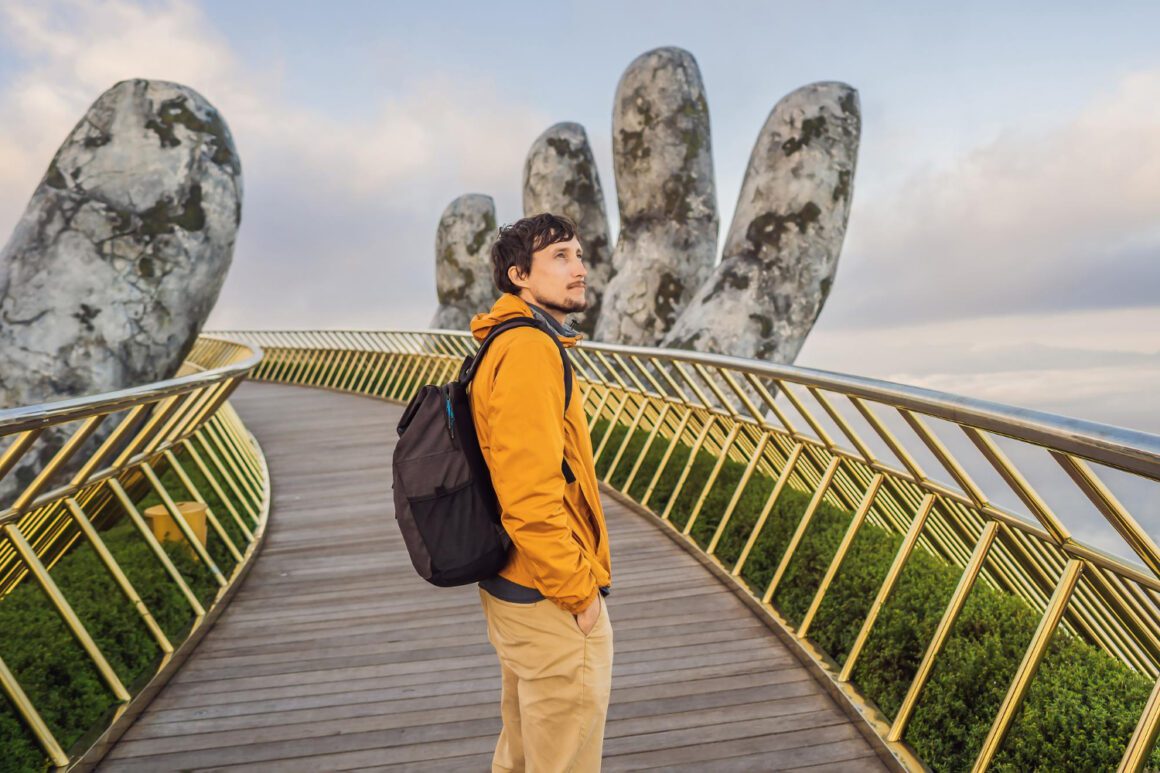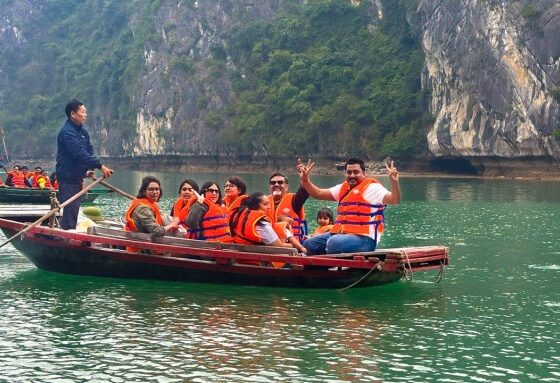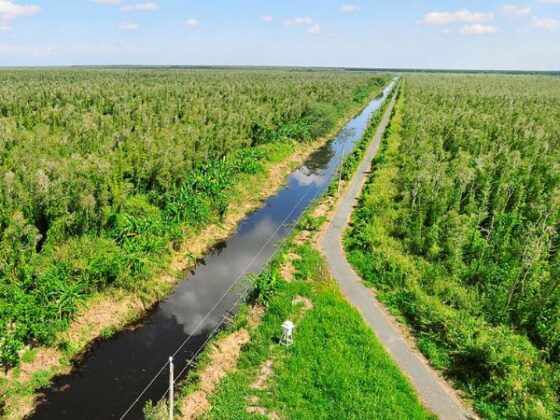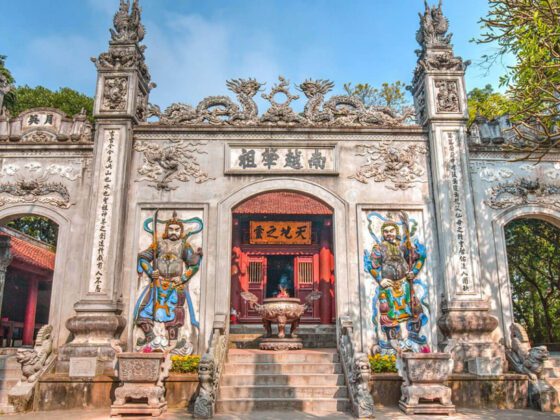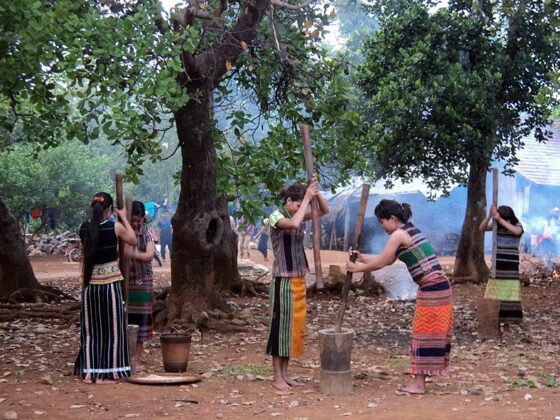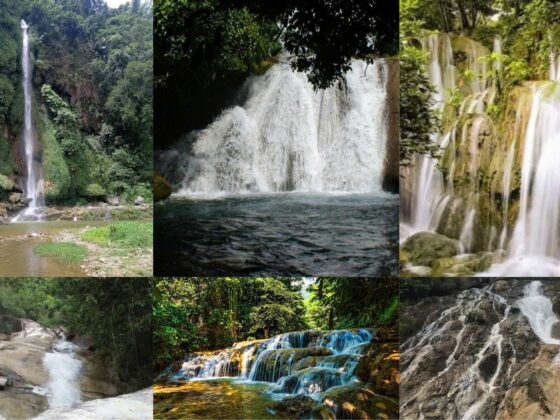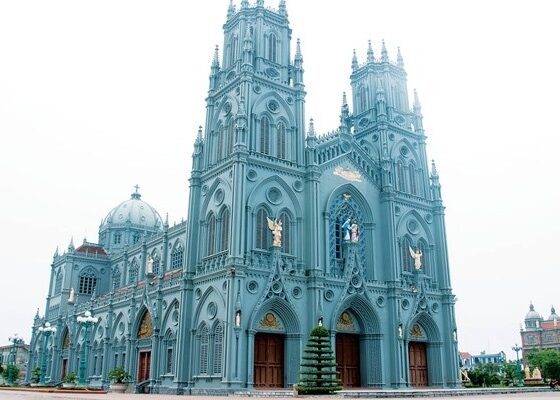Table of Contents Show
✍️ AI is summarizing:
Vietnam, a captivating country in Southeast Asia, offers a diverse range of climates and cultural experiences. To make the most of your trip, it’s essential to pack appropriately and dress for the different regions and seasons. In this article, we will explore what to wear in Vietnam, ensuring your comfort and style throughout your journey.
From bustling cities to the tranquil countryside and stunning coastal areas, we’ll cover clothing recommendations for various destinations and seasons, enabling you to enjoy Vietnam’s beauty while feeling confident and well-prepared.
Related post:
- Travel for Sustainable Tourism: Embrace Eco-Friendly Travel in Vietnam
- Vietnam Travel Tips: Essential Advice for an Unforgettable Journey
- Solo Travel in Vietnam: Safety Guide and Essential Tips
Climate considerations
Vietnam’s climate is diverse, ranging from tropical in the south to subtropical and temperate in the north. This variation results in distinct seasons: winter (December-February), spring (March-May), summer (June-August), and autumn (September-November). To ensure comfort during your visit, consider both temperature and humidity when packing. What to wear in Vietnam depends greatly on the region and time of year, so careful planning is essential.
What to wear in Vietnam by season?
What to wear in Vietnam during winter
Vietnam’s winter is a relative term. While it might be considered winter compared to the rest of the year, temperatures rarely drop below 10°C (50°F), except for the mountainous regions in the North.
If you’re visiting Northern Vietnam during the winter months (December to February), pack:
- Warm layers: A light jacket, sweater, or fleece.
- Long pants: Jeans or thick leggings are ideal.
- Warm socks: Wool or thermal socks will keep your feet cozy.
- Closed-toe shoes: For warmth and comfort.
- Accessories: A scarf, hat, and gloves can be useful, especially in the early morning and late evening.
While the south experiences less drastic temperature changes, it’s still a good idea to pack:
- Light layers: A light jacket or sweater for cooler evenings.
- Long pants: For visiting temples or more conservative areas.
- Comfortable shoes: For exploring cities and towns.
What to wear in Vietnam depends heavily on the time of year and location. While the country is known for its tropical climate, winter in the northern regions and mountainous areas can bring cooler temperatures. Pack layers, including sweaters, jackets, and scarves, to stay comfortable. Remember, even during winter, Vietnam can be surprisingly sunny, so don’t forget your sunscreen and sunglasses. Layering is key to adapting to fluctuating temperatures throughout the day.
What to wear in Vietnam during spring

Spring in Vietnam is a delightful time to visit, with pleasant temperatures and blooming landscapes. However, the weather can vary depending on the region. You should pack lightweight and breathable clothing, including T-shirts, light sweaters, jeans, and comfortable walking shoes.
Packing for spring in Northern Vietnam:
- Light layers: Pack long-sleeved shirts, light jackets, and pants.
- Comfortable footwear: Closed-toe shoes are ideal for exploring cities and hiking.
- Rain gear: Spring showers are common, so bring a light raincoat or umbrella.
Packing for spring in Southern Vietnam:
- Lightweight clothing: Opt for breathable fabrics like cotton and linen.
- Shorts and T-shirts: Perfect for daytime activities.
- Light jacket or sweater: For cooler evenings.
What to wear in Vietnam depends on the time of year and where you’re going. While the country is known for its hot and humid climate, packing for spring requires a bit more planning. Remember, even during spring, the sun can be strong, so don’t forget your sunscreen and a hat. Comfortable walking shoes are essential for exploring bustling cities and historical sites. And no matter what season you travel, don’t forget to use the ExoTrails app to find interesting places and routes to make your trip more exciting and attractive.
What to wear in Vietnam during summer
What to wear in Vietnam depends on the time of year, but summer calls for lightweight, breathable clothing. Pack shorts, t-shirts, and sundresses for daytime activities, and consider bringing lightweight pants or skirts for visiting temples or more conservative areas.
Remember, what to wear in Vietnam also means protecting yourself from the strong sun with a hat and sunscreen, and wearing comfortable shoes for exploring. You need to protect yourself from the strong sun with a wide-brimmed hat, sunglasses, and high-SPF sunscreen. Comfortable walking shoes are essential for exploring cities, towns, and markets.
Highlight the warm and humid climate, particularly in coastal regions. Recommend lightweight and loose-fitting clothing made of breathable fabrics, such as cotton or linen. Mention the importance of sun protection, including hats, sunglasses, and sunscreen.
What to wear in Vietnam during autumm

Autumn in Vietnam offers pleasant weather, making it a popular time to visit. However, the climate varies significantly between the north and south.
Packing for autumn in Northern Vietnam
- Light layers: Pack long-sleeved shirts, light jackets, and pants for comfortable days.
- Warm layers: Bring a sweater or light jacket for cooler evenings and mornings.
- Comfortable shoes: Closed-toe shoes are ideal for exploring cities and hiking.
- Rain gear: Autumn is the rainy season in the north, so a raincoat or umbrella is essential.
Packing for Autumn in Southern Vietnam
- Lightweight clothing: Opt for breathable fabrics like cotton and linen.
- Shorts and T-shirts: Perfect for daytime activities.
- Light jacket: For cooler evenings or air-conditioned spaces.
What to wear in Vietnam during autumn depends on the region, but generally, the weather is pleasant with a mix of warm days and cool evenings. While the sun can still be strong, especially in the south, pack a hat and sunscreen for protection. Comfortable walking shoes are essential for exploring the country’s many attractions.
As you venture further north or to higher altitudes, you’ll experience cooler temperatures. Pack a mix of lightweight and slightly warmer clothing, such as long-sleeved shirts, light jackets, and pants, to adapt to changing conditions. Autumn is also a beautiful time to witness the changing foliage, making it a perfect season for outdoor adventures.
Dressing for Cultural Etiquette

Respect for local customs is essential when visiting religious sites. Vietnamese temples have a strict dress code.
- Cover your shoulders and knees: This is the most important rule. Avoid wearing sleeveless tops, shorts, or skirts that are too short.
- Modest attire: Opt for loose-fitting, modest clothing. Avoid revealing outfits.
- Footwear: Remove your shoes before entering the temple.
Respecting local customs is essential when visiting Vietnam, especially when exploring religious sites. What to wear in Vietnam, particularly in temples and pagodas, requires mindful packing. Modest clothing that covers the shoulders and knees is crucial. Opt for lightweight long pants or skirts and tops with sleeves.
If you’re unsure about your attire, it’s better to be overdressed than underdressed. Some temples might offer sarongs or covers for those who are inappropriately dressed. Adhering to these guidelines demonstrates respect for the local culture and creates a positive impression.
Conclusion
What to wear in Vietnam is essential for a comfortable and respectful journey. By carefully considering the climate, seasons, and cultural norms, you can pack accordingly. From the bustling cities to the serene countryside, dressing appropriately will enhance your travel experience.
Remember, layers are key for adapting to Vietnam’s diverse weather, and comfortable footwear is a must for exploring this beautiful country. Regardless of when you visit, be sure to download the ExoTrails app to discover exciting destinations and routes that will enhance your trip.

